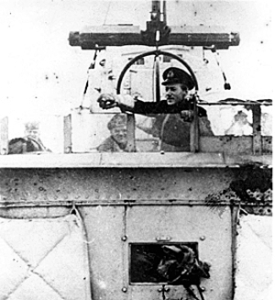What is a hero? Are heroes born with distinguishing characteristics that sets them apart, or are they simply ordinary people reacting to extraordinary events and circumstances? An accepted definition of heroism is the display of exceptional courage in the face of danger, particularly in battle.

Naval hero Max Bernays, whose decisive actions during a hard-fought sea battle against U-210 earned him a recommendation for the Victoria Cross.
In the case of Victoria Cross recipient Commander Rowland Bourke, an introverted nature did not prevent his active involvement in perilous World War One rescue missions at sea.
For Chief Petty Officer Max Bernays, surrounded by smoke and flames at the helm of HMCS ASSINIBOINE, heroism consisted of keeping courage and a cool head as his vessel came under attack from a German U-boat.
For Lieutenant-Commander John Stubbs, Commanding Officer of HMCS ATHABASKAN, the price of heroism was life itself.
Lieutenant Hampton Gray of BC was one of the last Canadians to die in combat in WW2, in a daring raid against Japanese ships for which he was posthumously awarded the British Commonwealth’s highest medal for valour, the Victoria Cross.
Canada`s most decorated naval hero, Captain Frederic Thornton Peters, VC, DSO, DSC and bar, DSC (U.S.), RN, has the rare distinction of receiving multiple awards for valour in each of the world wars.
Lieutenant Willie Maitland-Dougall was the first and only Canadian submarine commanding officer to be lost in action, and also remains the youngest to earn command. Yet the Royal Canadian Navy has never officially recognized his accomplishments and few modern submariners have even heard his name.
A young Royal Canadian Navy lieutenant who became a hero of the Battle of the Atlantic in World War II remains relatively uncelebrated in his hometown of Victoria, BC. The achievements of Commander Ted Simmons have gone largely unrecognized by his city, and country.
CFB Esquimalt Naval & Military Museum remembers the bravery of these individuals, and celebrates their connection to Canada’s West Coast.

